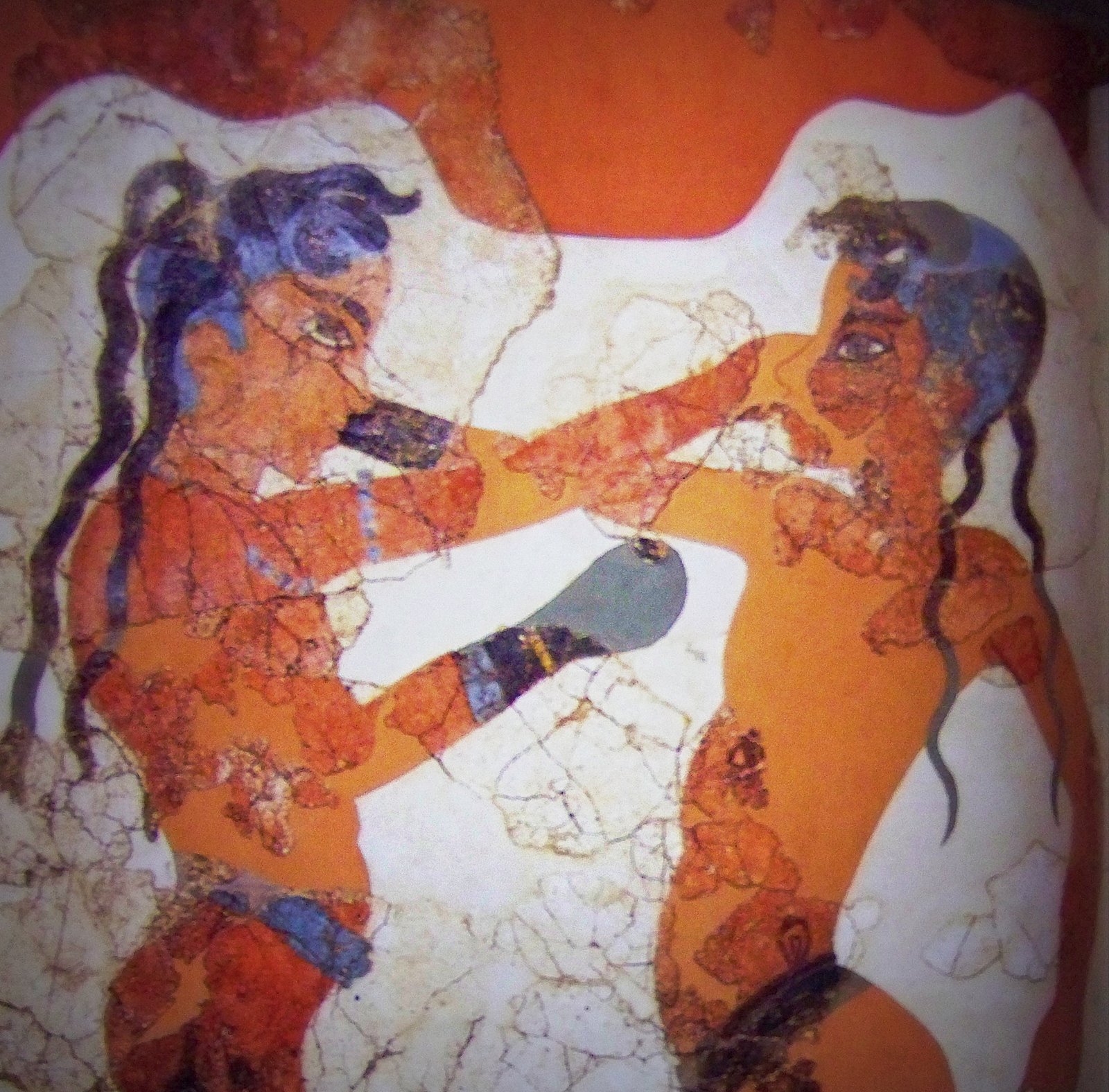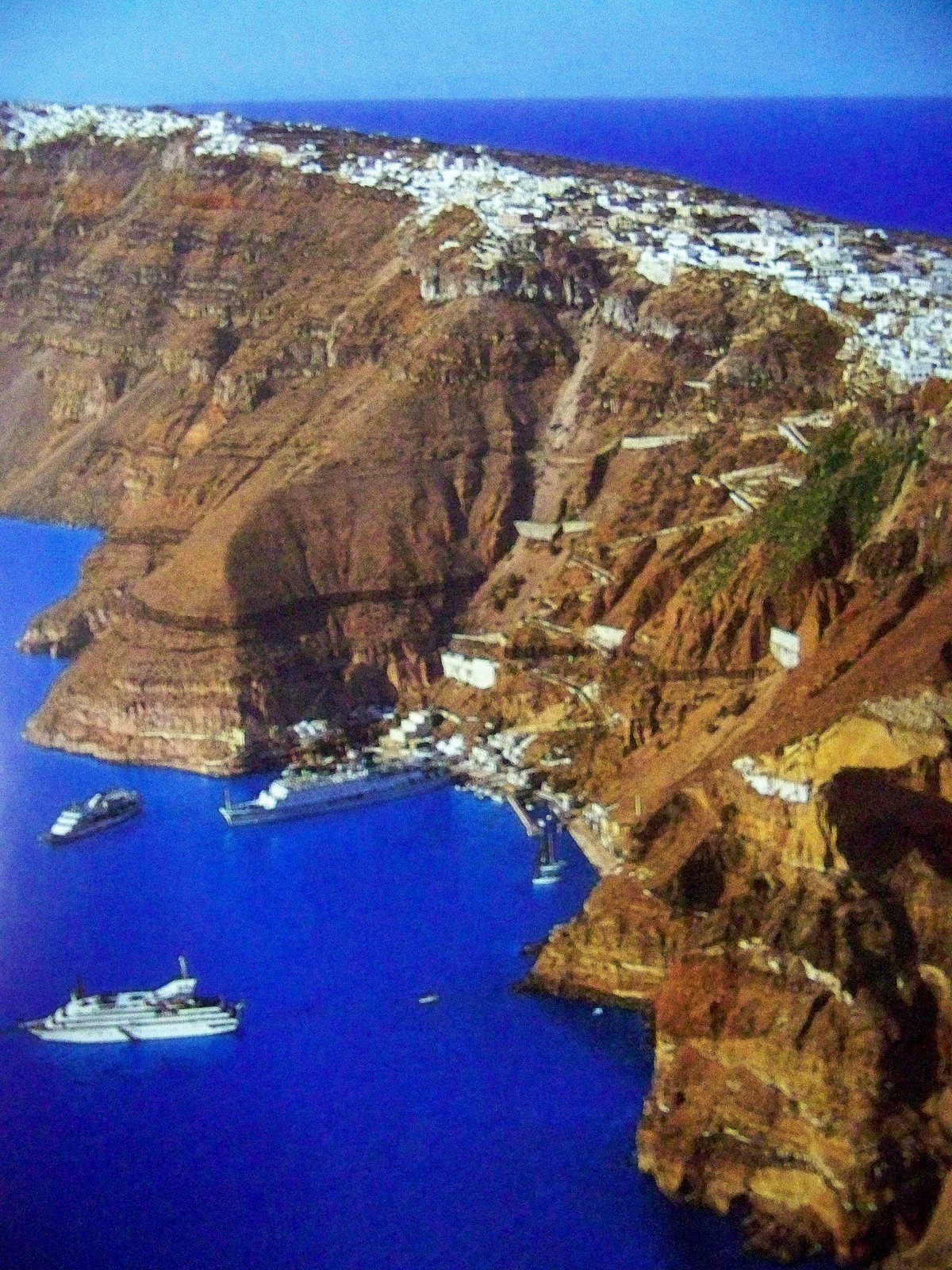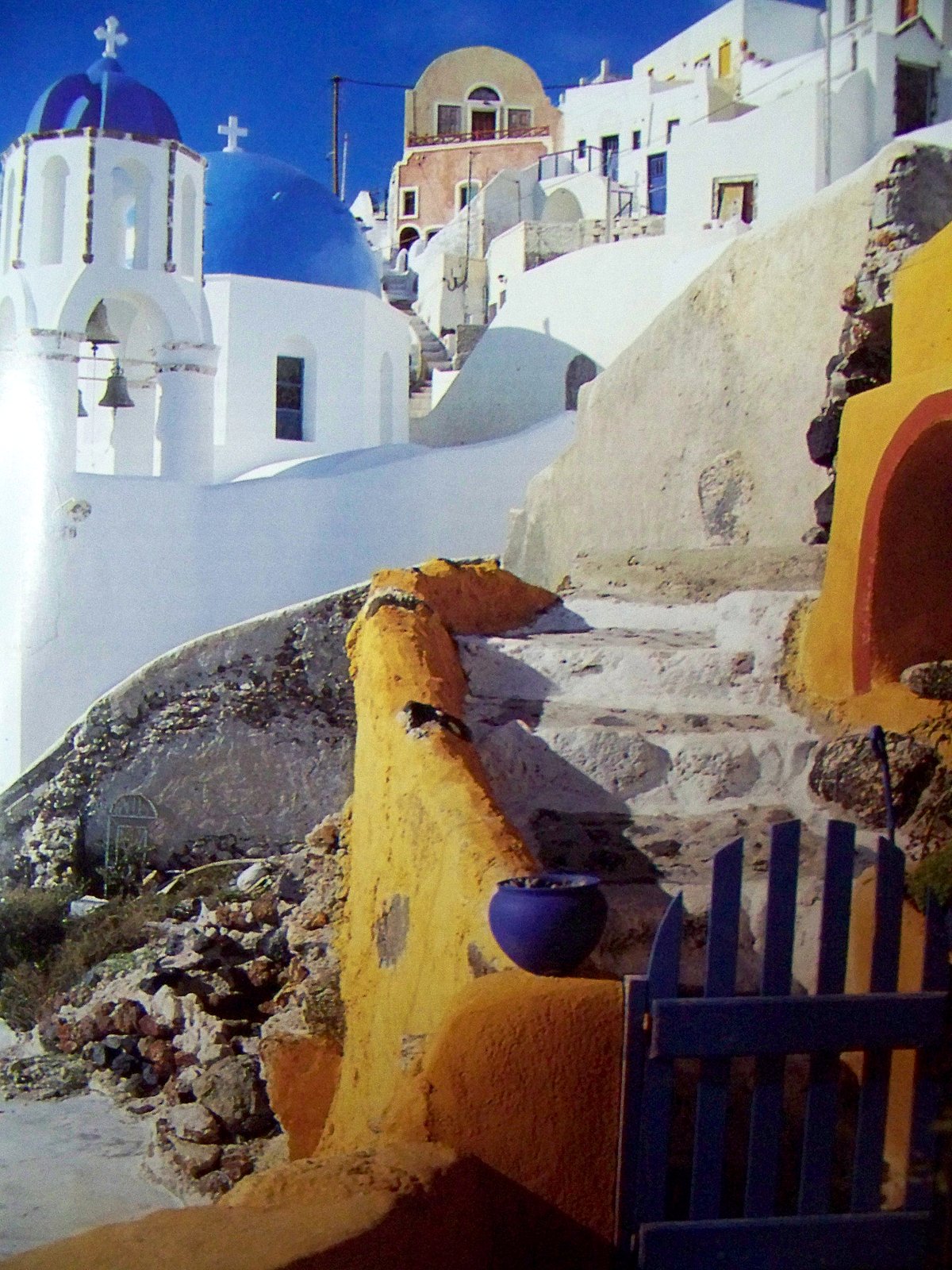About historic SANTORINI by Archaeologous
About historic SANTORINI by Archaeologous
If when you, like most people and definitely cruisers, or vacationers to the Mediterranean, hear the word “Santorini, the famous Greek island rumored to be Atlantis, they almost immediately think of a palette full of colors in the brilliant golden sunsets, the largest caldera in the world, the calming energy that is palpable, and the white Cycladic architecture of cloud like villages perched atop the cliffs like a pearl crown. Also, the memory or thought of donkey rides, blue roofed churches, amazingly blue waters with islands in the middle of the caldera and award winning wines from the grapes growing from impossible land teases every one of your senses. It is truly the most extraordinary island in the Aegean, an other-worldly terrain that most feel a “homing urge” to return. The official name of the island is Thira, after the Dorian King “Thiras, but foreigners refer to it by the name given in honor of St Irene, the island's patron saint, who died here while in exile in 304 A.D.
Maybe you believe in the myth of Atlantis and like many historians nod with that inner opinion of Santorini possibly being Atlantis. It’s all Santorini, a Cycladic island shaped like a circle with a donut hole in the middle filled with other islands. The ancient name was “Strongylo” which means round in Greek. The island was formed in it’s present shape due to one of the largest volcanic eruptions in the world’s history.
HISTORY*** 3600 BC Santorini, as the major excavation finds in the city near Akrotiri and the famous red beach show, was a thriving prosperous city being host to an ancient Minoan (Crete) colony. Many of the pottery, wall ornaments and statues are very similar to those found in Crete. (It’s enjoyable to go to the Ancient Thira Museum before going to the actual excavation sites to further enrich your experience). The Phoenicians, from Byblos, Lebanon, were given credit for the alphabet and around 825 BC the inhabitants of Thira, were using it. This intelligent society by the 7th and 6th centuries BC (150 years before the Acropolis was built) had commercial and trade relations with most of the island and cities of Greece. This was due to its strategically perfect position. Prehistoric Akrotiri is 4,000 years old and was “frozen” in time much like Pompei in Italy. The volcanic ash covered and protected the storage bins of items, the pottery, the 2 story houses, and basically gives one a clear look at life 4,000 years ago. The eruption was in 1625 BC, and to show the immensity of the eruption, the sound of the blast was reportedly heard in the Scandinavian countries and Asia Minor, ancient trees in California showed change of atmosphere in their rings, and in the layer of ice in Greenland, scientist found volcanic ash from an eruption taking place around 1625. Nothing else happened on the planet – or + 400 years . ( This info is from the meeting of 150 professional geologists, volcanologists and scientist that did research about the eruption).
The eruption is estimated to have been four times more powerful than that of Krakatoa in 1883. There have been approximations of the size of the tidal wave created by the volcano. According to a special on History channel the wave could have been 600’ when it left Santorini and still 200 ‘ high when it reached and wiped out the thriving Crete Minoan society 70 miles away.
As Jacque Cousteau In 1978 found out, it was not a problem to get down to the deepest waters of 1200’ in the caldera, the impossibility was that the land had sunk 3000’ deep and so anything to be discovered was under 3,000 ‘ of lava—under 1200 ‘ of water. So for now, enjoy the beauty and know that the secrets are locked away.
INTEREST POINTS: Since there is no rain basically on Santorini, the grapes are grown in their own particular to Santorini way, of the plants absorbing what they need from the island atmospheric 75% humidity. There are few springs on Santorini so the islander have cisterns in most of the houses, and tankers come carrying non-drinkable water. July can get up to 40 degrees C. and in January down to 12 C. The island of Santorini has two distinctive characteristics. The cave houses and the 550 churches. The volcanic earth is easy to manipulate and stay very cool in the summer and warm in the winter, so you will see them frequently. Some are huge and whole communities go there for safety.
If you are arriving by cruise ship, if possible be on deck as you arrive (usually it is quite early in the a.m. If you are staying in one of the any gorgeous hotels in Fira, Imergliga or any caldera view villages, you will be astounded when you look over your hotel railing facing the caldera.
Of course during the summer months, be ready to “share” this one-of-a-kind vacation destination on the globe. Note: you will think that Oia, the northern most town, is giving away money by the hoardes of “beauty seekers” one will find there. Just enjoy the gorgeous sunsets (clear view), the art galleries, and fine shops cafes, and tavernas.





